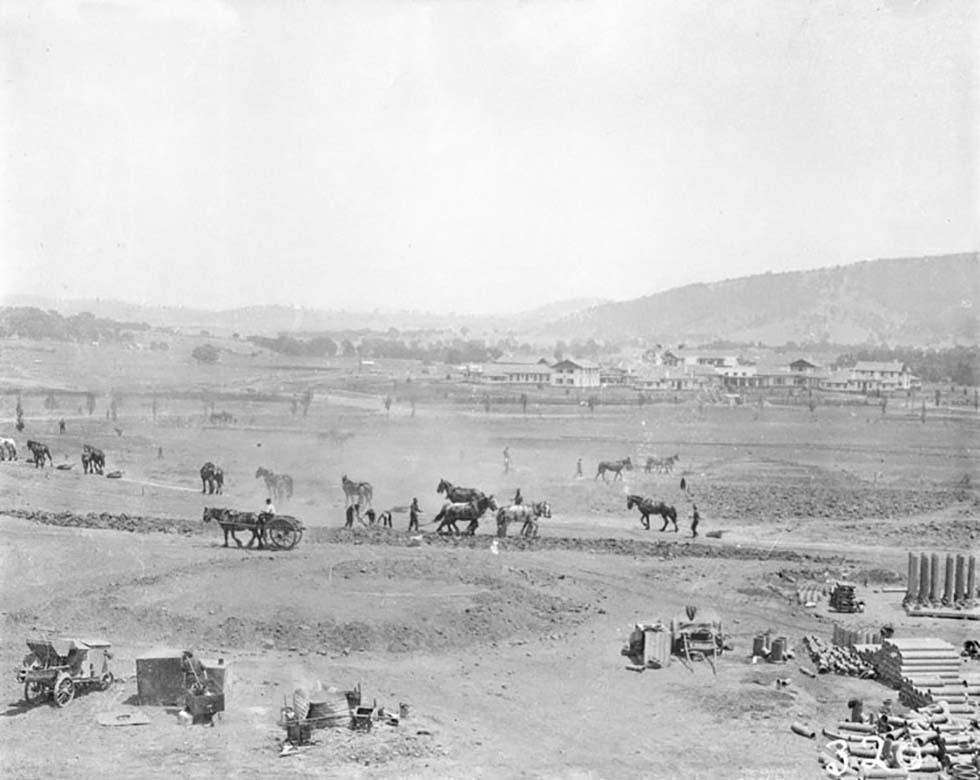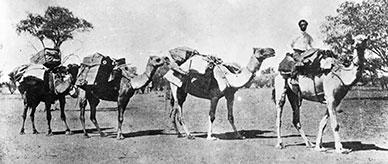


About this record
This is a photograph of workers levelling land and laying pipes. They are preparing for the development of lawns and garden beds at Provisional Parliament House (now known as Old Parliament House), Canberra.
Landscaping the national capital
Extensive work was needed to construct and landscape the new city of Canberra in the Federal Capital Territory (now the Australian Capital Territory).
Throughout the city, and at Parliament House, land was levelled for building, and roads were constructed. This program of building works provided employment for many people in the 1920s.
Both horses and motorised machinery were used for this work. Draught horses helped workers level and compact the land. A heavy implement, known as a smudge, was dragged across the ground to lift loose soil from the surface. The soil would hit the angled backboard and fall into the tray on top. The top tray had to be emptied using a shovel as the smudge was too heavy to tip over.
Formal lawns, gardens and recreational areas covering 132 acres (53.4 hectares) were later established around Parliament House. Charles Weston, Superintendent of Parks and Gardens for the Federal Capital Commission, planted exotic and native trees and cypress hedges on the garden's edge. Federal architect John Smith Murdoch helped prepare the planting plans.
Walter Burley Griffin, the original designer of Canberra, had been greatly influenced by the City Beautiful and Garden City movements that dominated town planning at the time. By 1959, over 2 million trees had been planted in the city.
Acknowledgments
Learning resource text © Education Services Australia Limited and the National Archives of Australia 2010.
Related themes
Need help with your research?
Learn how to interpret primary sources, use our collection and more.




